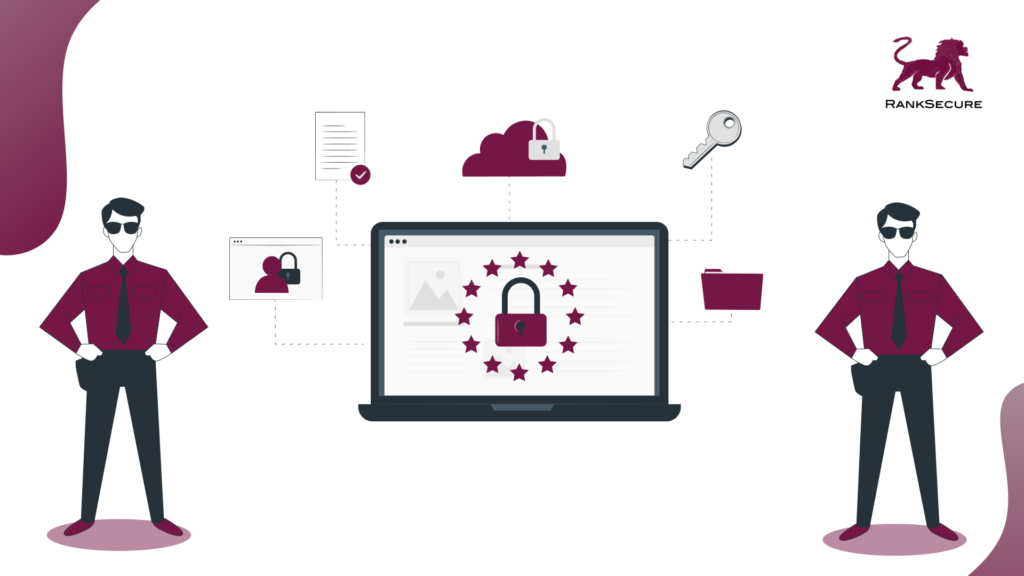
Cybersecurity culture: How to create a healthy one in your organization
Every time there is a cybersecurity risk for your organization, the cybersecurity team will be instantly held responsible, and the entire business will be reliant on them to find a solution.
A phishing email, malicious software, or an insecure web link can jeopardize your company’s security and invite cyber threats. However, in this case, blaming the cybersecurity team and expanding their range cannot be the answer to every risk your business faces.
Every employee in your organization should view cybersecurity as a responsibility in addition to their everyday responsibilities. Is this something your employees do? Probably not if your company lacks a cybersecurity culture.
What Exactly Is Cybersecurity Culture?
A cybersecurity culture entails every employee in a company being aware of cybersecurity practices and responsive to risks that are prevalent in the company, taking responsibility for keeping their data and equipment secure, adhering to the cybersecurity norms, and practicing training to prevent new cyber threats that are circulating in the industry.
A good cybersecurity culture ensures that every employee has the knowledge, training, and responsibility to maintain the company’s security standard.
How Do You Create A Cybersecurity Culture?
It may seem like too much work to introduce a new culture into your organization, but a cybersecurity culture is just as vital as the other cultures that already exist. Bringing in a new culture requires everyone’s efforts, from top executives to employees, and by doing it the right way, you can do it easily without drastically changing your company and breaking the bank.
Assess The Situation
Before focusing on creating a culture, it is essential to identify activities that are susceptible to cyber-attacks. It is difficult to analyze a specific area of error in a company where several employees are working; however, if you can access risk situations and the common causes behind them, you may find where your attention is most needed.
For example, if your company has a bring-your-own-device (BYOD) policy and it has the potential to cause a breach, you can make a decision there.
In the same way, you can examine each risk factor and devise solutions to overcome them in order to foster a healthy cybersecurity culture in your organization.
Create A Strategic Plan
After analyzing your current culture and the security areas to cover, you can devise a detailed plan that will involve each and every employee in your company in order to maintain security.
Start your planning at the very top, because when executives follow a plan and are committed to maintaining the company’s culture, employees will follow suit. Educate and engage your executive team by instituting cybersecurity awareness and security measures within the organization.
Once your C-suite has agreed to the culture, you can devise a strategy to assign a role and responsibility to each employee in keeping their company’s security active and strong. Inform them about potential cyber-attacks and explain their roles in avoiding or dealing with them confidently.
Bring In Advanced Security Tools
Security tools are critical for protecting your business from cyber threats. If you are at war with cyber attacks, refusing to invest in security tools will weaken your position. Before involving your employees in the culture, make sure they have the necessary security tools.
The market is brimming with advanced security tools and solutions that will improve your company’s security and make your security team’s job easier.
If your company requires top-tier cybersecurity solutions, RankSecure can assist you. We provide a wide range of cybersecurity and encryption solutions, in addition to IT audit and security assessments.
With more than 35 years of experience in the industry, we are able to provide your business with the superior solutions it requires.
Invest In Training To Improve The Security
Cybersecurity training is critical for the entire organization, not just the IT/security department. Since any employee can invite a cyber threat, it is critical that everyone is educated on topics such as password management, encryption and digital signing, phishing attacks, and backing up work.
If education alone isn’t enough, you can have daily or weekly training to improve your organization’s cyber security.
The department of cyber security can handle training and explain all of the company’s vulnerabilities. The training can cover topics such as cybersecurity policies, guidelines, critical cyber attacks, preventative measures, damage control, etc.
For the training to remain interesting and educative, you can also include examples of recent cyberattacks, industry news, best practices, and so forth.
Make Learning Fun And Rewarding
Making sure every employee participates actively in the culture is a crucial component of a strong cybersecurity culture. While your training should be effective, you should also try to keep them interesting, fun, and, in some cases, rewarding.
Employees should be involved in practical lessons when learning how to distinguish phishing emails from regular emails or how to avoid VPN threats.
You can simulate a risk situation and observe how your employees respond to it. This will encourage employees to become more active and engaged in the training. You can also make it more interesting by including fun games or tasks.
You should be able to reward your employees based on their performance because rewards can keep your employees competitive and motivated for a long time.
Bring Training Into The Real World
Once you have raised awareness, educated, and trained your employees about cyber security and risk management, you can assist them in regularly adhering to the practices and keeping them engaged in cybersecurity.
You should maintain open lines of communication with your employees and provide a safe space for them to seek assistance, clarify doubts, and improve their performance.
Since not every employee is a techie, you should provide them with equal opportunities to learn and improve their cyber security skills. You can also encourage them to learn new cybersecurity practices on a regular basis and to put them into practice as needed.
Conclusion
Cybersecurity is not the responsibility of a department, but of everyone, and when your employees understand this and are willing to work on it, you are creating a good cybersecurity culture. Threats evolve along with technology.
Whatever level of enhanced security you have, a team approach from all of your employees works better. You can easily avoid cyber threats if your employees begin to take responsibility for the company’s security and contribute to the culture.
Recent Posts
How to stay ahead of digital financing frauds
How to stay ahead of digital financing frauds According to statistics, India recorded nearly 164 billion digital payments in 2024. However, reports indicate that around 800 digital payment fraud cases occur daily, which is 10 times more than what the RBI’s annual report suggests. As digital finance expands
The Impact of Present-Day Energy Crisis on Small Businesses & Strategies to Mitigate Them
The Impact of Present-Day Energy Crisis on Small Businesses and Strategies to Mitigate Them Small businesses have long faced challenges that create inevitable impacts on the cash flow and day-to-day operations. Despite these challenges, the utmost requirement for any business to function is resources, especially energy resources. And
Comparing Smart Power Monitoring Tools vs. Traditional Solutions
Smart Power Monitoring Systems vs. Traditional Solutions IT energy demand accounts for approximately 2% of global CO 2 emissions, approximately the same level as aviation, and represents over 10% of all the global energy consumption (over 50% of aviation’s energy consumption). IT can account for 25% of a modern office building’s energy



